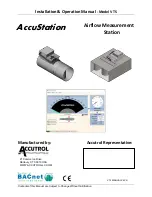
DHW METHODS
HeatNet Control V3
Page 55
Method 5b
can also be used in a Hybrid mode on
MEMBER boilers with a thermostat connected to the OR
OVR input. This will enable DHW heating, and be used
instead of having the 10k sensor’s temperature detect
when DHW heating is needed, but will use a selectable
sensor instead to maintain setpoint.
When the OR OVR input sees the thermostat close, the DHW
pump/valve will be engaged and remain energized as long as
the OR OVR input sees that the thermostat is closed. The
DHW setpoint along with the DHW heating band will then
be loaded. A steady temperature will now be maintained
using the
HYB SENSOR
setting in the DHW menu. This
sensor will control the water temperature at the sensor’s
location, enabling or disabling the boiler as needed until the
OR OVR input sees the thermostat open. Once the
thermostat opens, the DHW pump post purge will begin.
The difference between the settings of method
5a
vs. method
5b
is the
“USE SENSOR”
setting.
5a
requires that the
“USE
SENSOR”
setting
be set to
YES
, and the
5b “USE
SENSOR”
setting be set to
NO
. The
HYBRID SENSOR
setting must also be set in the
5b
mode to the sensor where
temperature needs to be maintained. It must be set to
OFF
in
the
5a
method.
Method 5a
USE SENSOR = YES
HYB SENSOR = OFF
Method 5b
USE SENSOR = NO
HYB SENSOR = SUPPLY, DHW,
RETURN
Each sensor selection/location has its advantages. Select the:
Supply
sensor will limit the temperature/firing rate of the
boiler, but may not be sufficient for continuous demand or
speed in heating the tank. It is already available, so no
additional sensor is needed.
Return
sensor will allow the boiler to run its supply
temperature up quickly, but may bounce off of the operating
limit band. This would heat the tank in the shortest time, but
may overheat the tank. It is already available, so no
additional sensor is needed.
DHW
sensor will allow the placement anywhere needed to
maintain that locations temperature. This is an additional
sensor that needs to be acquired.
A thermostat can be placed in a tank and connected to the OR
OVR input. (
On MEMBER boilers only,
The MASTER
uses OR OVR already with DHW METHOD 4), When the
thermostat contact closes across the input
OR OVR (J12A .7
& .8)
on a MEMBER boiler
,
the control
will sense this
closure and disconnect itself from HeatNet. It will perform
the DHW call, post-purge the pump, and put itself back on
line available for space heating.
DHW METHOD 6: DHW using Direct
Control
(
Not preferred)
If the control’s
SETTINGS: 4-20 mA
input is set to
PRIORITY = HIGH the 4-20 mA signal, once brought above
the 4-20 mA starting current, can be used to override any
other Heat Demand and direct modulate the boiler.
This can be set in menu:
ADVANCED SETUP: 4-20 mA
INPUT
. It allows a MEMBER boiler to be taken offline and
directly modulated by an external control.
If the MASTER is using it for heating and the ADVANCED
SETUP: 4-20 mA is set to PRIORITY= HIGH, an external
control can now output a 4-20 mA signal which will take
over the boiler’s fire rate and override all other heating
demand inputs. The external control would also need to open
any valves or turn on pumps. This is typically used for DHW
Control.
Using the 4-20mA input
(OPTIONAL)
The 4-20mA input is designed to operate per the ISA-50.1
standard. It will support Type 2, Type 3, and Type 4
Transmitter/Receiver circuits.
With the type 4 configuration, multiple boilers (up to 5), may
be connected in series using the –mA +mA –mA +mA
scheme (no jumper to 24VDC RET). This allows one 4-
20mA transmitter to control multiple boilers. A free-floating
250 ohm resistor is viewed by the BMS (or external
control’s) 4-20mA transmitter across the + and –4-20mA
terminals with this method. The 4-20mA (1) input is used to
control direct modulation and for remote setpoint control.
The Type 2 and Type 3 circuit may use the supplied
+24VDC and 24VDC RET connections (J10B) to power a
remote transmitter. The –mA terminal will need to have a
jumper connected to the adjacent 24VDC RET terminal to
reference the signal ground.
The 4-20mA (2) input is reserved for flow meters and
ancillary devices.
Summary of Contents for FUTERA XLF Series
Page 27: ...CONTROL METHODS HeatNet Control V3 Page 27 Figure 25 Base loading relay...
Page 67: ...WIRING CONNECTIONS HeatNet Control V3 Page 67 Figure 49 Jumper Dip Switch Locations...
Page 73: ...WIRING CONNECTIONS HeatNet Control V3 Page 73 Figure 57 Temperature sensors...
















































